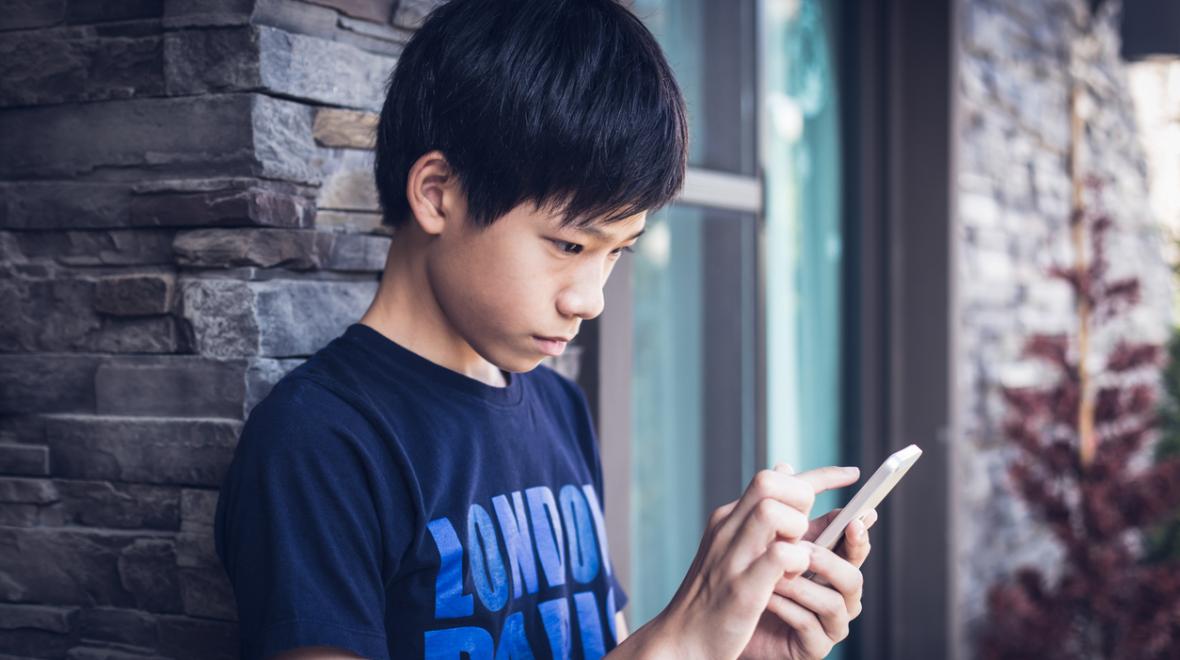
This year, even the most hardcore digital detoxers have seen their kids’ screen time skyrocket as schools, enrichment programs and even playdates have moved online to help prevent the spread of the coronavirus. Now that keeping our kids and ourselves physically safe requires spending so much time online, the question becomes, how do we keep our kids safe in cyberspace?
In the past, parents’ primary concern was keeping teens safe from online predators, but now that kids — even very young ones — are going to school online, more parents are starting to worry about cyberbullying.
“There just hasn’t been enough opportunity to do much solid research on distance learning, but because kids are spending so much more time online, it increases the opportunity to have these hurtful behaviors happen,” says Julie Hertzog, director of PACER’s National Bullying Prevention Center.
What is cyberbullying?
Most simply, Hertzog says, “Cyberbullying is bullying that happens through the use of technology.” Often cyberbullying isn’t much different from bullying that happens in person; mean comments and rumors are the most common forms of cyberbullying. Whether it happens in person or online, bullying involves hurtful behavior where there is an imbalance of power.
But there are some uniquely pernicious aspects to cyberbullying. A cyberbully can be anonymous while their behavior is much more public, and cyberbullying is harder to escape than in-person bullying. That’s both because it doesn’t stop when the school day ends and because a single post can take on a life of its own, collecting comments and shares long after the initial poster has moved on.
Ironically, despite its potentially wide reach, cyberbullying can also be hard to detect.
“So much of cyberbullying is outside the view of adults,” says Hertzog. Although most social media platforms require users to be at least 13 years old, that limit is not widely enforced. And kids are pretty savvy at finding ways to communicate without supervision, even if they aren’t on social media. Cyberbullying can happen on any internet-connected device — phones, computers or gaming systems — and platforms such as group texts, the chat function in virtual meetings, or even in shared files on Google or Microsoft OneNote.
What are schools doing?
Every state has a bullying prevention law on the books and many of these laws require that schools address cyberbullying in their district policy. Anti-bullying law in Washington state unfortunately does not cover cyberbullying, but most Washington schools do have established online behavior standards. Student web activity trackers are standard on most school-issued devices, as are filters that ensure compliance with the Children’s Internet Protection Act (CIPA) and automatic safe search settings on popular search engines such as Google and Bing. Many school districts, including Seattle Public Schools, have compiled online safety and responsibility resources to educate families. (Also check out Common Sense Media’s family engagement resources on cyberbullying.)
Preventing cyberbullying at home
Despite schools’ best efforts, it simply isn’t possible for adults to monitor all of kids’ online interactions. “Kids are going to see bullying that happens online long before adults do. There are always places where we can’t monitor them. That’s why education is so important,” says Hertzog.
Hertzog says parents should think of the internet like a swimming pool. “You don’t just throw a kid into the pool; you give them swimming lessons. Start at a very young age before kids go online, have conversations with them,” she says. “It’s really important for parents and schools to set boundaries.”
Remind kids that behavior that is not okay in person is still wrong online and talk about how to handle inappropriate behavior when they see it — and they will see it. Cyberbullying is often painfully public, and a 2019 survey estimated that about a third of adolescents have experienced cyberbullying while 15 percent have bullied someone online.
Kids often don’t tell adults when they witness or experience bullying. There are lots of potential reasons for this. Kids may not have been taught how to recognize bullying or may think that telling is tattling.
“Make sure they have that understanding that it’s good to tell an adult when you’re being bullied or when you see it; that it’s the right thing to do. Instead of sending the message that to tell is tattling, we want to send the message that to tell is to protect somebody,” says Hertzog.
Kids may also be embarrassed, because they think they should be able to handle bullying on their own or because the bullying is about something they did. They may also be afraid of a parent’s response. Will they lose their phone? Get in trouble for whatever they did that instigated the bullying? What if parents overreact and make things worse?
It’s hard not to go ballistic when we find out someone has hurt our kid. But bullying requires a calm response.
If bullying happens
“Number one — and this is universal regardless of age — you want to let them know that you are there for them and that you’re going to figure this out together,” says Hertzog. Most bullying situations do require adult intervention, but this is also an opportunity to teach self-advocacy.
“It’s never up to the child to fix the situation, but we always encourage involving kids in the solution. If you involve them in the brainstorming process, the solution is much more likely to fit and to be effective,” says Hertzog.
After talking with your child, the next step is to gather evidence. This is much easier in the case of cyberbullying, where screenshots can create a tangible trail. If the bullying occurred on social media, check the platform’s safety pages for cyberbullying guidelines. You might be able to shut down the offending account or at least have harmful posts removed. You should also take this evidence to your child’s school, where you can come up with a plan for dealing with the situation. The plan should include consequences for anyone involved in the bullying but shouldn’t stop there. It also needs to include steps to prevent future instances of bullying.
“Everyone deserves to feel safe at school,” says Hertzog.











